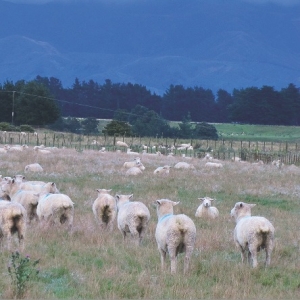“Zinc is only protective, not curative,” points out Angus Campbell of Northland Veterinary Group, Whangerei.
“You want it there before the spores hit the liver. If damage has been done, zinc won’t fix it.”
Beef and Lamb New Zealand’s risk and incidence monitor* shows 20% of sites had elevated spore counts as of January 11, far higher than at this stage in the three previous years. Rodney, North Auckland, topped the table with a massive one million spores per gram.
Rural News went to press before Jan 18 data was available, but Campbell says conditions have continued to be favourable (warm nights, plus moist pasture) for the fungus so it is likely spore counts will be on the rise at more sites.
Spore counts can double every 24-48 hours, so a low reading can rise very rapidly, going from 1000 to 2000 then 4000 and 8000 and so on in as little as a week, he explains.
“You need to be very careful about relying too heavily on low readings. If there are some high readings, you can be pretty sure they will soon be high all over the district.”
That said, local variations in weather and pasture make a big difference so taking pasture samples from at risk paddocks and getting them analysed is “not a bad idea,” Campbell adds.
“Not many farms do their own spore counts these days, but it is a good idea because the best information is that specific to your farm, not one 10 or 15km away.”
That advice is echoed by Feilding-based vet Trevor Cook who travels nationwide on consultancy work.
“As soon as there’s an indication spore counts are going up in your area, switch to your own monitoring,” he suggests.
The cost of tests is minimal and methodical sampling across a farm will help identify high and low risk paddocks.
“You can build a picture of where you can shift stock to if and when spore counts start to rise, and try to accumulate feed in the lower risk areas so that there’s feed there when it’s needed.”
Sheltered and shady areas with longer pasture are most likely to have high spore counts, so those are the areas to take pasture samples in first, he says.
The fact there were already pockets of elevated counts early in January is an indication the fungus is “up and running and starting to multiply early in the season,” Cook warns.
“The potential to produce large spore numbers later in the season requires the fungus to start multiplying early in the season.”
However, dry spells in the east of the country should limit risk in those regions, he notes.
According to Cook, often farms are unaware of productivity losses due to FE as there may be few, if any, symptoms, other than maybe a few lambs with crusty ears.
“Then there will be a lower result at pregnancy scanning that they can’t explain.”
In hoggets, exposure to the spores, as indicated by raised GGT levels in the blood, will cause a lifelong fertility reduction, he adds.
“So the consequences are significant.”
Campbell notes the disease has occasionally caused deaths numbering in the hundreds in unprotected dairy herds in the Waikato, but in less extreme cases production losses are still marked yet may go undiagnosed.
“Probably only 20% of cases develop skin lesions.”
His preference is for direct treatment, either by drench or bolus, to ensure every animal gets the required amount of zinc to protect it. In dairy herds drenching every three days would be the norm, but that can be stretched to a once a week interval for dry stock.
Protection from bolus treatment lasts four to six weeks, depending on the brand.
“We have seen clinical symptoms as late as June but usually the risk is gone by April-May.”
*www.beefandlamb.com/farm/facial-eczema/

















